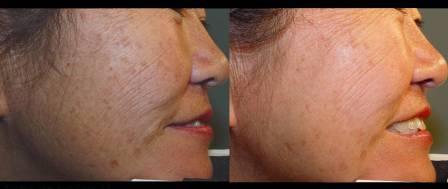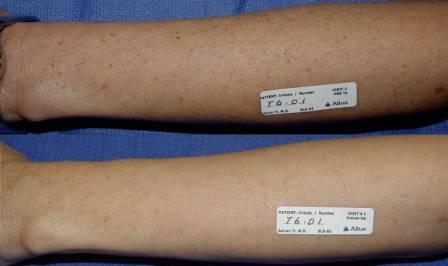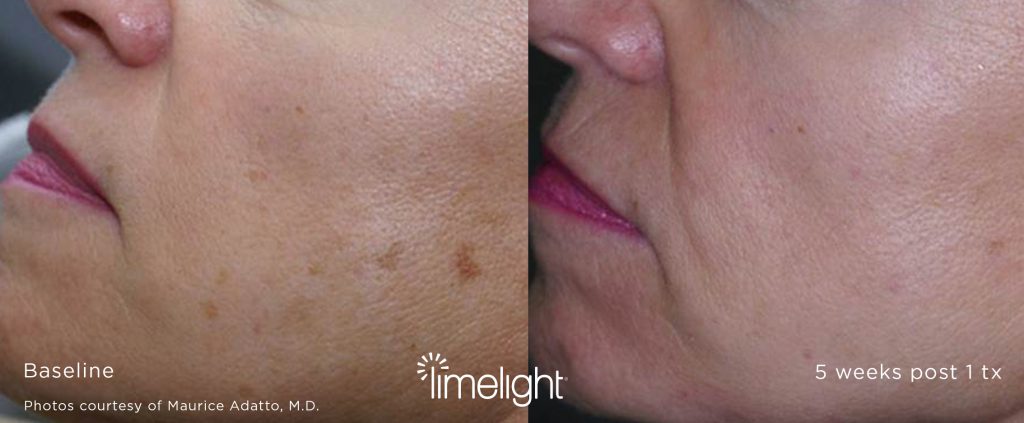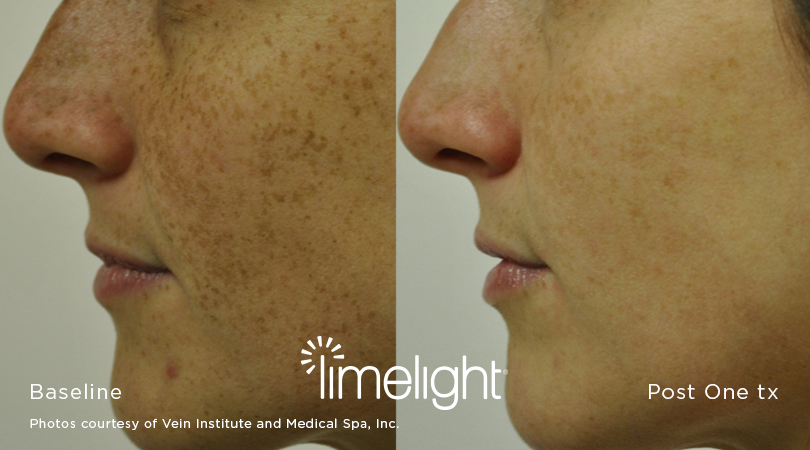IPL (Sun/Age Spots)
*Individual results may vary.
The term ‘age spot’, or lentigines, refers to the brownish spots that, over time appear on your face and body as a result of overexposure to the sun. As we age our skin is subjected to more and more sun damage. Our skin has what is called ‘melanin pigment’ which absorbs sunlight and helps naturally protect our skin from UV rays. However as we age, our skin’s natural ability to fend off UV rays from the sun begins to deteriorate, and as a result, we see the development of age spots. These age spots can be effectively treated with lasers.*
There are a couple different types of brown spots that people get on their skin. There are solar lentigos (age spots) and freckles (known as ephiledes). These come from the sun and that’s because the sun damages the melanocytes, which are the cells in the epidermis (the skin’s surface layer) that produce melanin pigment. Most of the cells in our epidermis are skin cells that form the dead skin layer as well as keratin that protects us from the outside world, but one in every tenth or twentieth cell is a melanocyte which produces melanin pigment and transfers this brown pigment to our skin cells to help protect us against the sun.
Some people have almost no melanin pigment and our skin does not do a good job of protecting us from the sun. Dark-skinned people do a much better job of protecting themselves from the sun. When the sun attacks light-skinned people, the body does not know how to respond properly. As a result it can cause abnormal melanin pigment in the form of freckles and brown spots.
IPL Treatment Before and After Photos

Before and After (4 weeks after 2 treatments)

Before and After (6 weeks after 2 treatments)

Before and After

Before and After
IPL Treatment FAQs
What areas can be treated?
Virtually any part of your body with sun and age spots or freckles can be safely treated.* The face, chest, shoulders, and arms are the most popular areas for treatment because they have typically had the most sun exposure.
What does the treatment do?
The visible light delivered by the Solar Genesis procedure is selectively absorbed by the pigmented spots on your skin. Its the heating of the pigmented cells that cause the therapeutic effect.*
What do treatments feel like?
When the hand piece is placed on your skin, it will feel cool and comfortable. When the pulse of light is delivered, you may feel a mild, brief pinching sensation.
How long will the treatment take?
The actual treatment will only take minutes. And, since there is no need to apply gel or any topical anesthetic, your total appointment time can easily fit into your lunch hour.
How many treatments will I need?
Typically, one or two treatments are sufficient to see dramatic improvement.* Additional treatments may be required for very large or dark spots or for densely covered areas.*
What happens after the treatment? Are there any side effects?
Immediately following the treatment, the spots may start to darken. You may notice a slight reddening of the surrounding skin. This typically subsides within a couple of hours.* Over the course of the next few weeks, darkened spots will fade and flake off.* Consult with your medical professional for complete information on the benefits and risks of treatment.
Will the spots reappear over time?
No, but new spots may appear.* These too can be removed.* Remember to liberally apply sunscreen when outdoors to minimize sun damage and the appearance of new spots.
Can all of my spots be treated this way?
Spots formed by sun exposure can effectively be treated with the Solar Genesis procedure.* There are, however, other types of pigmented lesions, such as birthmarks and moles.
When will I see results?
Most patients find the majority of their treated spots have shown significant improvement within several weeks of treatment.* However, your final result may not be apparent for a month or more.*
*Individual results may vary.
Schedule Online
